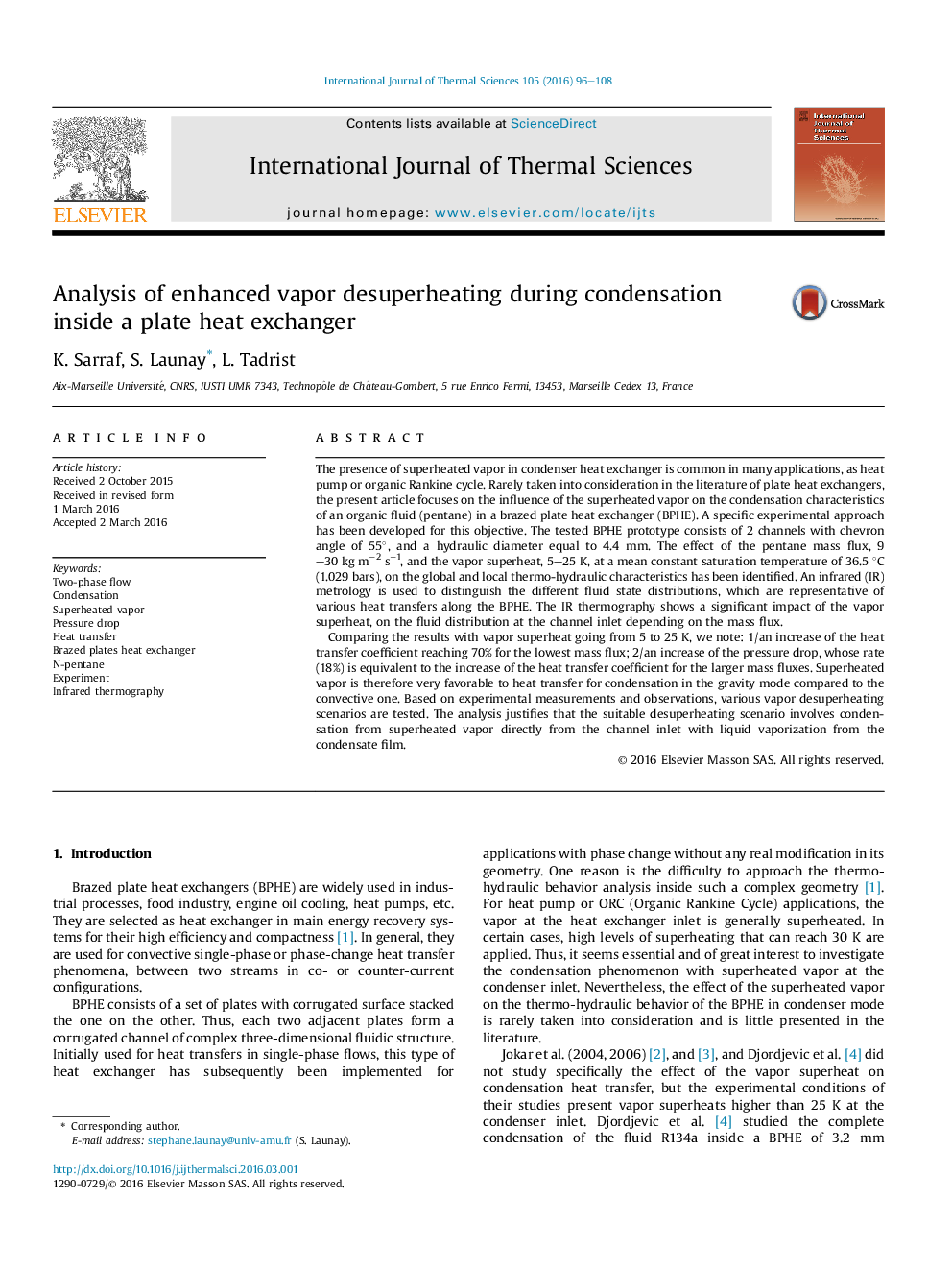| Article ID | Journal | Published Year | Pages | File Type |
|---|---|---|---|---|
| 667927 | International Journal of Thermal Sciences | 2016 | 13 Pages |
Abstract
Comparing the results with vapor superheat going from 5 to 25Â K, we note: 1/an increase of the heat transfer coefficient reaching 70% for the lowest mass flux; 2/an increase of the pressure drop, whose rate (18%) is equivalent to the increase of the heat transfer coefficient for the larger mass fluxes. Superheated vapor is therefore very favorable to heat transfer for condensation in the gravity mode compared to the convective one. Based on experimental measurements and observations, various vapor desuperheating scenarios are tested. The analysis justifies that the suitable desuperheating scenario involves condensation from superheated vapor directly from the channel inlet with liquid vaporization from the condensate film.
Keywords
Related Topics
Physical Sciences and Engineering
Chemical Engineering
Fluid Flow and Transfer Processes
Authors
K. Sarraf, S. Launay, L. Tadrist,
